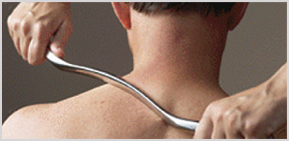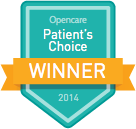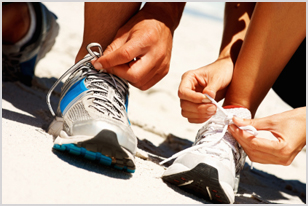Chiropractor and Medical Acupuncture Services
Sports Injuries
At Davisville Active Therapy, we treat musculoskeletal injuries through:
- Individual treatments
- A combination of manual therapy and soft tissue therapy
- Therapeutic exercise
- Use of modalities
- Graston® Technique
With faster healing and recovery, athletes get back into shape and are ready to compete, sooner.
Kinesio tape application may also be an option.
Motor Vehicle Accident Rehabilitation
At Davisville Active Therapy, all the primary forms of care used to treat car accident injuries – chiropractic, physiotherapy, massage, acupuncture – are available in one location. When it comes to the paperwork, we’re experts and will submit treatment plans for fast response, as well as billing auto insurers directly. We can also assist with legal referrals when patients are unfamiliar with procedures or paperwork.
Headache and Chronic Pain Management
The first step is to identify the headache category – there are over 100 types of headaches – before recommending treatment or referral. The forms Davisville Active Therapy may be able to treat include both Tension and Cervicogenic. With Migraines, the focus is to help the patient manage the symptoms and in some cases reduce the frequency.
Chronic Pain Management
Chronic pain is a very complex phenomenon, often involving more than a physical component. DAT may be able to assist with chronic pain management by:
Identifying physical issues and providing appropriate exercises to strengthen weak or deconditioned muscles.
The use of acupuncture to assist in pain modulation through neurophysiological means – by stimulating the body to release enkephalins and endorphins made naturally by the body. For example, we feel good after a workout because the body releases endorphins as we exercise.
Massage therapy can assist with the relaxation and release of muscle tension that may be a cause of chronic pain. Co-management with a family physician may be pertinent to the management of a patient’s chronic pain, for example, prescription medications.
Neck and Back Pain
Upper cross syndrome and lower cross syndrome are postural syndromes resulting from faulty upper and lower body muscle imbalances. These imbalances may lead to numerous musculoskeletal ailments that extend beyond the neck and lower back. Both syndromes are the result of a combination of hyperactive, tight muscles and weak, inactive, antagonistic muscles.
With upper cross syndrome, often called student or corporate syndrome (as the result of spending long hours working at a computer), the shoulders roll forward and the head is carried forward of the neck. Tightness in the pectoral muscles pulls the shoulders forward. This causes the shoulders to hike up along with the sub-occipital muscles (at the base of the skull), as well as other accessory muscles including: the scalenes and levator scapulae muscles. This leads to the weakening and lengthening of the counter-acting muscles –deep neck flexors, the rhomboids and middle and lower trapezius fibres – that normally retract the shoulders.
Groups of muscles work through antagonistic and agonist or synergistic means. Known as reciprocal inhibition, here’s a simple example: when the biceps are active, the triceps – the muscle group doing the opposite movement – is shut off through a reflex mechanism. This enables the biceps to perform their function without resistance.
In the case of upper cross syndrome, someone sitting in front of a computer – arms extended for long periods of time, head sitting forward staring into the monitor – the pectorals and sub-occipital muscles start to tighten up. As a result, the rhomboids and shoulder retractors shut off.
This careless posture can lead to a number of conditions: Cervicogenic and tension headaches, shoulder pain and rotator cuff syndromes, neck pain.
In the lower body, lower cross syndrome occurs when the lumbar spine erector muscles, hip flexors, quads and often, hamstrings are tight. This tends to weaken gluteal and abdominal muscles resulting in low back pain, often leading to a predisposition to disc injuries in the low back.
Knee Treatments
Depending on the cause of the condition, treatment will vary. Bracing may be an option.
Ligament/Structural/Meniscus Injury: Treatment is Physiotherapy-based. Following assessment, modalities for pain control are introduced along with rehabilitative exercise and stimulation for tissue healing.
Knee (Osteo) Arthritis: Treatment starts with identification – usually based on the symptoms – and confirmed by X-ray. There is significant evidence indicating that Acupuncture is an effective modality for pain management of knee OA.
Exercise therapy, along with modalities may help, in addition to self-directed exercise programs. Nutritional supplements may be of benefit to arthritis sufferers. Generally, patients with knee arthritis require a series of visits, in short sequence, to receive some pain relieving modalities and joint mobilizations. Patients are then encouraged to regularly conduct a series of specific exercises. Flare-ups may require return visits for treatment. An unloader brace may be of benefit to these patients.
Shoulder Treatments
The shoulder is a very complex structure, containing many muscles, tendons, ligaments and cartilage. The first step in treatment is assessment to help identify the pain generating structures. Although exercise therapy and rehabilitation are major components of shoulder treatments, referral for diagnostic ultrasound, MRI or X-ray may be required.
Medical Acupuncture
Dr. Moh follows the neurophysiological and anatomical model for acupuncture which is well-accepted in western medicine.
By stimulating the neuromuscular system, natural pain killers – endorphins and enkephalins – are released to provide relief. Local stimulation of injured body tissue with acupuncture needles triggers the body’s natural response to deliver fresh blood flow and fluids (healing white blood cells) to potentially help with the restorative process of injured or damaged soft tissue. This reaction is similar to a bee sting, minus of course, the anaphylaxis and pain level! The body identifies inflammation or stimulation and sends histamines, plus, other bio-factors to help restore the injured area.
Medical acupuncture may also help release spasm and trigger points in muscles by stimulating specific tactile-sensitive muscle fibres.
We prescribe acupuncture to help treat:
- Golfer’s elbow (medial epicondylitis)
- Headaches (tension or migraine) and neck pain
- Knee pain due to osteoarthritis
- Low back and neck pain, Chronic and Acute
- Sciatica and sciatica-type pain
- Shoulder pain – rotator cuff
- Tennis elbow (lateral epicondylitis)
Graston® Technique
This treatment is prescribed for professional and amateur athletes following a soft tissue injury or an ongoing ailment. When muscles, tendons or ligaments are injured, they can heal haphazardly, with random scar tissue forming. The area will often feel tight and painful. By combing over fibrotic tissue, this technique breaks up the scar tissue and smoothens the tissue underneath.
We use the Graston® Technique to:
- Promote faster rehabilitation and recovery
- Help reduce dependence on anti-inflammatories
- Return patients to a normal level of functionality
Treatment incorporates stretching and strengthening along with icing, during the rehabilitation process. Patients typically receive 1-2 treatments weekly and can expect to rebuild soft tissue injury to healthy, functioning tissue within a 4-5 week period. Results vary but most patients have a positive response by the 3rd or 4th treatment.
We may prescribe Graston® for:
- Achilles tendonitis and calf strain
- Tennis elbow (lateral epicondylitis)
- Golfer’s elbow (medial epicondylitis)
- Patella-femoral syndrome
- IT band syndrome (brought it up higher)
- Plantar fasciitis
- Shin splints
- Rotator cuff tendonitis
- Neck pain – chronic or acute
- Low back pain
- Carpal tunnel syndrome
- Quad / hamstring strain
- Post-surgical scar tissue
Support Bracing
We fit a range of non-surgical knee bracing for ligament injuries (ACL, MCL, etc.) and Chondromalacia Patellae, or “Runner’s Knee.” For ligament injuries a brace typically acts as the support, or “substitute,” for the damaged ligament unable to perform its role. We also provide unloader bracing solutions for patients suffering from arthritis. Effective unloader bracing reduces the amount of stress or pressure applied to the knee, whether on the job or at the gym.
Medical Referral
Patients typically require a prescription from their family doctor or specialist for all bracing needs including:
- Athletic
- Pre-surgery
- Post-surgery
Dr. Moh sees every patient for a personal assessment. Precise measurements are taken and load functionality determined. From initial assessment to first fitting, the process takes 2-3 weeks. Post-production modifications and adjustments are complimentary and included at no additional charge.
Coverage
Knee bracing is covered in whole or part by most extended health care plans.
Custom Orthotics
Custom foot orthotics are corrective devices, resembling insoles, that slip inside shoes to counterbalance forces exerted on the skeletal structure by both muscles and gravity.
Orthotics reduce pain and discomfort by improving proper weight distribution to:
-
- Correct overall posture
- Control abnormal foot and gait functions
Custom foot orthotics are recommended to alleviate many painful conditions:
- Plantar fasciitis
- Heel spurs
- Shin splints
- Knee pain
- Ilio-tibial (IT) Band Syndrome
- Hip pain
- Low back pain
Worn regularly, orthotics help to reduce further damage and promote soft tissue restoration.
Your Custom Orthotics
From prescribing orthotics for everyday casual and dress shoe wear to specialized running and athletic shoes, we start with a biomechanical assessment. Next, three-dimensional impressions are taken of each foot and sent to a locally-based orthotic laboratory. From the initial prescription-impressions to first fitting, the process takes about 2-3 weeks. Post-production modifications and adjustments are complimentary and included at no additional charge.
Foot Facts
- The foot contains 26 bones or 25 percent of the body’s total bone count
- Foot imbalances often start from childhood and may be recognizable as early as age three
- The average person takes 8,000 to 10,000 steps every day
- Half of Canada’s population has missed a day of work due to foot problems
Coverage
Custom foot orthotics are covered in whole, or part, by most extended health care plans.
Performance Sports Socks
These socks, for both men and women, are designed to improve blood circulation and increase oxygen delivery to muscle tissue, maximizing an athlete’s endurance. Athletes who wear these socks may also benefit from less sports-related aches and pains, optimizing their performance potential.
- An Achilles tendon protector, reduces vibration on vulnerable ligaments
- Footbed cushions and toe protectors keep feet blister-free
- Latex-free high-tech fibres provide odor and thermal control; socks stay incredibly dry
- Extra-wide comfort top band keeps sock comfortably in place

